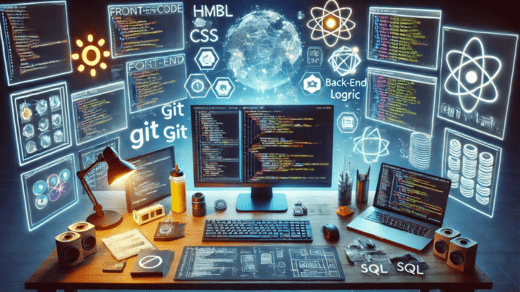Exploring the Role of Headless CMS in Full Stack Development

In the era of web development, content management systems (CMS) play a vital role in organising and delivering digital content. Traditionally, CMS platforms like WordPress and Drupal have dominated the market by providing an all-in-one solution for both front-end presentation and back-end content management. However, with the increasing demand for flexibility, scalability, and omnichannel experiences, a new type of CMS has emerged: the headless CMS.
Headless CMS is quickly becoming the go-to solution for developers who want more control over how content is delivered to different platforms. Whether you’re working on websites, mobile apps, or IoT devices, a headless CMS can be a powerful tool in a full stack developer’s toolkit. If you’re looking to expand your skills in this area, enrolling in a full stack developer course that covers headless CMS technology can help you stay ahead of the curve.
In this blog, we will explore what a headless CMS is, how it varies from traditional CMS platforms, and why it plays a pivotal role in full stack development.
What is a Headless CMS?
It is a content management system that decouples the front-end presentation layer (the “head”) from the back-end content repository. Unlike traditional CMS platforms where both content management and content delivery are tightly integrated, a headless CMS allows developers to manage content independently from how it’s displayed.
This decoupling provides greater flexibility and control over how content is used across multiple channels. Instead of being restricted by predefined templates or themes, developers can build custom front-end experiences using their preferred frameworks and tools, while still leveraging the robust content management features of a CMS.
For those looking to learn how to integrate a headless CMS into full stack projects, many full stack developer courses offer modules on API-driven development, making it easier to adopt this approach.
How Headless CMS Differs from Traditional CMS
Traditional CMS
Traditional CMS platforms, like WordPress, are monolithic in nature. They handle both content management and front-end rendering in one system. While these platforms are user-friendly and suitable for simple websites, they can be limiting for developers looking to create custom solutions or deliver content across multiple platforms.
In a traditional CMS, the content and its presentation are closely tied together. This tight coupling means that any changes to the back-end system could impact how the content is displayed on the front end, making it harder to create unique user experiences or adapt content for mobile apps, kiosks, or other channels.
Headless CMS
In contrast, a headless CMS is focused solely on content management. It doesn’t dictate how content is rendered, leaving that responsibility to the developer. Content is stored in the CMS and made available through APIs, allowing developers to fetch it and display it in whatever way they choose.
This separation of concerns makes headless CMS an ideal choice for full stack developers who want flexibility and control over their application’s front end. Whether you’re building a web app with React or a mobile app with Flutter, the headless CMS provides a consistent way to manage and deliver content across platforms.
If you’re new to this concept, enrolling in a full stack course in hyderabad that teaches API-driven development and modern CMS solutions can be a great way to get started.
The Role of Headless CMS in Full Stack Development
As a full stack developer, you’re responsible for both the front-end and back-end of an application. A headless CMS can make your job easier by offering a centralized system for managing content while giving you the freedom to build custom front-end solutions using the latest technologies.
Here’s how headless CMS fits into different aspects of full stack development:
1. Front-End Flexibility
With a headless CMS, you have the freedom to choose your front-end technology stack. Whether you prefer to work with React, Vue.js, Angular, or any other framework, you can easily integrate the content via the CMS’s API. This means you’re not limited to the themes and templates of a traditional CMS, enabling you to create fully customized user experiences.
This flexibility is particularly valuable for full stack developers working on projects that require a consistent user experience across different platforms, such as web apps, mobile apps, and even smart devices. A full stack developer course can help you learn how to effectively use APIs to fetch and display content from a headless CMS, ensuring that you can deliver seamless experiences across multiple channels.
2. Scalability and Performance
One of the key advantages of using a headless CMS is its ability to scale. Traditional CMS platforms often struggle with performance issues as the application grows, due to their tightly integrated nature. In contrast, a headless CMS separates content management from presentation, allowing you to scale the front-end and back-end independently.
This decoupling also enhances performance by enabling faster content delivery through optimized APIs. When you’re building a full stack application, performance and scalability are critical factors, especially when your user base grows or when you’re dealing with high traffic.
Many full stack developer courses cover the importance of scalability in modern applications, and learning how to implement a headless CMS is an important skill to manage large-scale projects efficiently.
3. Omnichannel Content Delivery
In today’s digital landscape, users expect to access content across multiple devices and platforms, from desktop websites to mobile apps and even voice-activated devices. A headless CMS excels at omnichannel content delivery, allowing you to push the same content to multiple channels through APIs.
For full stack developers, this means you can build applications that provide a consistent user experience regardless of the device. Whether your content is displayed on a smartphone, a tablet, or a smartwatch, a headless CMS ensures that the content remains accessible and up-to-date.
If you’re interested in building cross-platform applications, a full stack developer course in hyderabad that focuses on headless CMS and omnichannel content delivery can give you the skills to create solutions that reach users on all platforms.
4. Simplified Content Management for Non-Technical Users
While headless CMS offers significant advantages for developers, it’s also designed to simplify content management for non-technical users. The back-end interface of a headless CMS is typically user-friendly, enabling content creators, editors, and marketers to manage content without needing to understand the underlying technology.
This means that content teams can make updates and changes to the content independently of the development team, speeding up the workflow and reducing the risk of breaking the front-end. Full stack developers can focus on coding and delivering the best user experience while the content team handles the content.
By enrolling in a full stack developer course, you can learn how to implement headless CMS solutions that balance the needs of both developers and content creators, ensuring a smooth collaboration between teams.
Popular Headless CMS Platforms for Full Stack Developers
Several headless CMS platforms are available today, each offering features that cater to different project requirements. Some of the most popular options include:
- Strapi: A popular open-source headless CMS that allows you to create and manage content with a fully customizable API.
- Contentful: A cloud-based CMS that provides robust API support for delivering content to multiple platforms.
- Sanity: Known for its flexibility and real-time collaboration features, Sanity is ideal for large content-heavy applications.
- Ghost: Initially a blogging platform, Ghost now offers headless capabilities with a focus on speed and simplicity.
For developers interested in gaining hands-on experience with these tools, many full stack courses in hyderabad include training on how to integrate headless CMS platforms into modern applications.
Conclusion
A headless CMS is a effective tool in full stack development, offering flexibility, scalability, and performance improvements over traditional CMS platforms. If you’re a developer looking to enhance your skills in modern web development, enrolling in a full stack developer course that covers headless CMS solutions can give you the knowledge and hands-on experience needed to succeed.
With the advancement of omnichannel content delivery and the demand for flexible, scalable solutions, learning how to work with a headless CMS will keep you ahead of the competition in today’s competitive development landscape. By adopting headless CMS in your full stack projects, you’ll be able to create applications that are faster, more flexible, and scalable, all while delivering seamless experiences to users across different platforms.
Contact Us:
Name: ExcelR – Full Stack Developer Course in Hyderabad
Address: Unispace Building, 4th-floor Plot No.47 48,49, 2, Street Number 1, Patrika Nagar, Madhapur, Hyderabad, Telangana 500081.
Phone: 087924 83183





